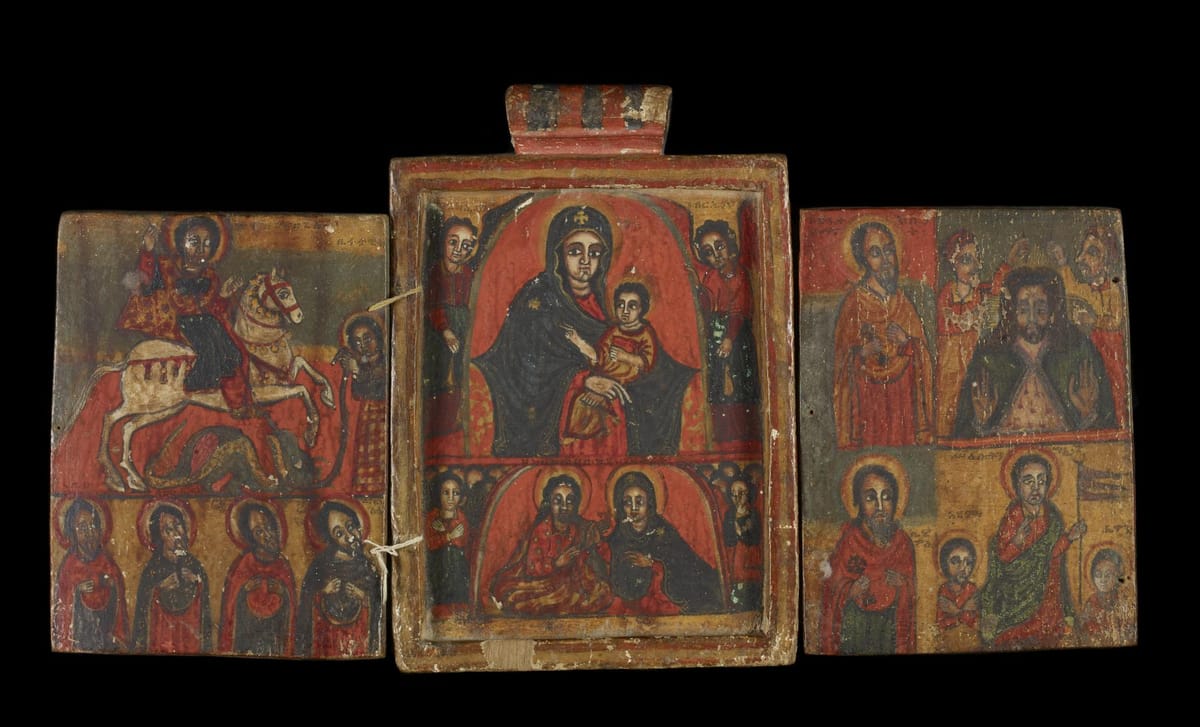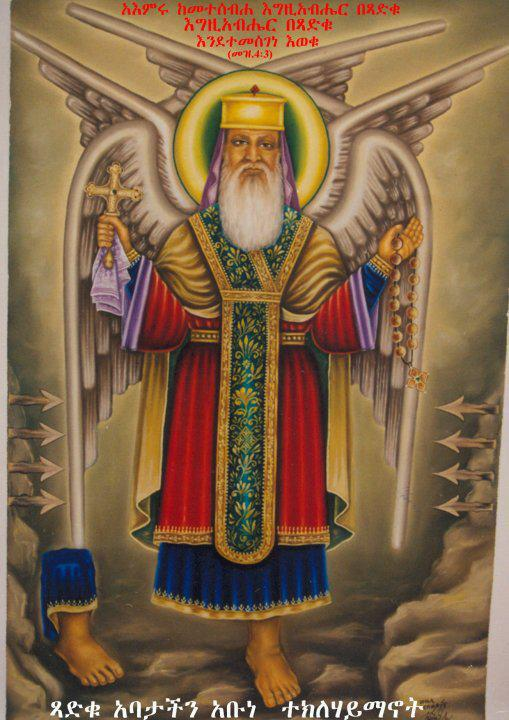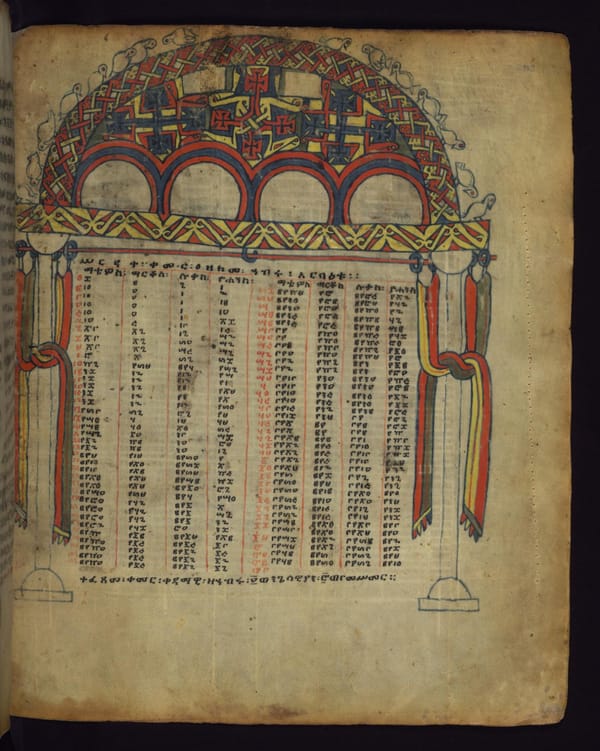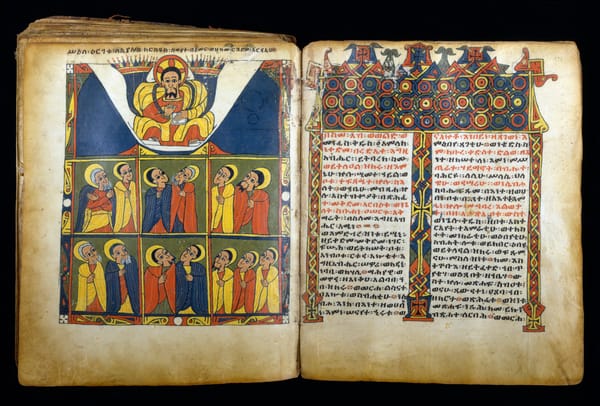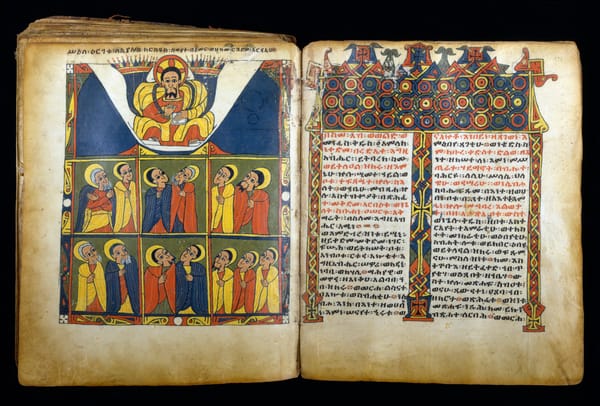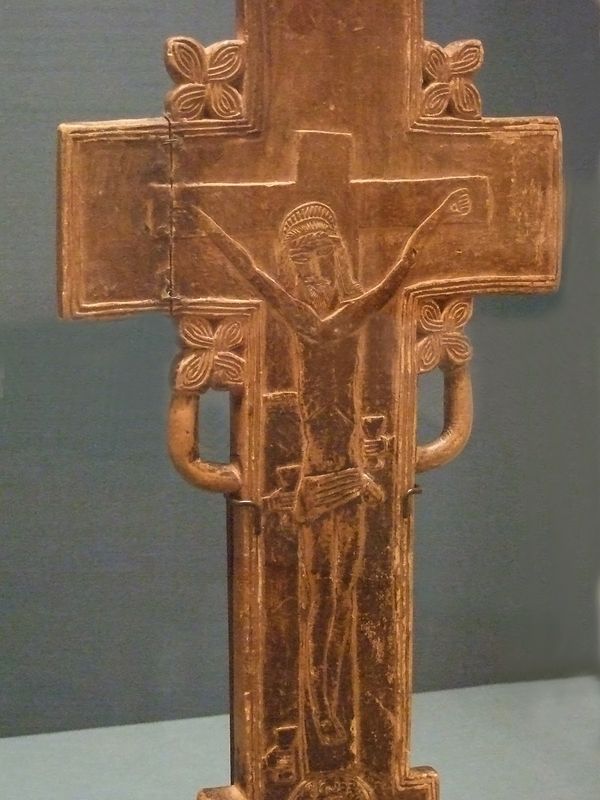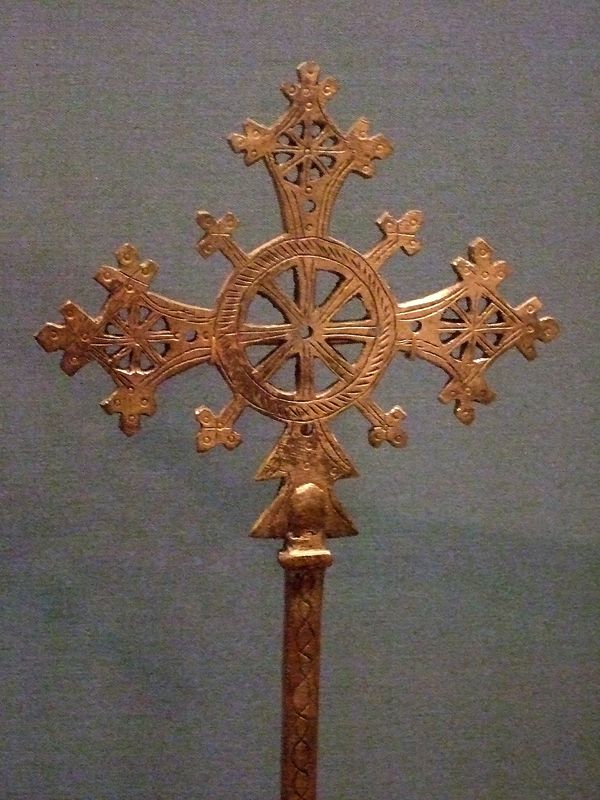This double-sided triptych icon from Ethiopia is a small-scale painting that would have been used in private devotion.
The cylinder at the top of the piece reflects the construction of smaller Ethiopian icons that were suspended from a cord and worn around the neck. When open, the piece displays several images of key importance in Ethiopian Orthodox Christianity. On the front, arranged in two registers, are the Virgin and Child flanked by archangels (above center), the Covenant of Mercy, where Christ appoints his mother as the intercessor for humankind (below center), Saint George (above, outer wing), and four saints (below, outer wing). On the reverse are the Crucifixion with three saints and the Archangel Michael (center), Kwer’ata Reesu, or Christ Wearing the Crown of Thorns (upper right, outer wing), and the Harrowing of Hell (lower right, outer wing). When closed, the exteriors of the wings display colorful painted crosses and an abstract geometric design of nested rectangles. The image of the Virgin and Child is a copy of the famous miracle-working icon said to have been painted by Saint Luke from the church of Santa Maria Maggiore in Rome. It is likely that printed versions of the icon were brought to Ethiopia by Jesuit missionaries, and local artists reproduced the image in wall paintings, icons, and small-scale devotional paintings, like the Walters example. The Kwer’ata Reesu, which combines the traditional images of Christ as the Man of Sorrows and Ecce Homo (Christ presented by Pontius Pilate to the crowd), became the standard of Ethiopian emperors beginning in the seventeenth century. Copies of both these icons appear as the central images in a similar double sided pendant from Ethiopia.
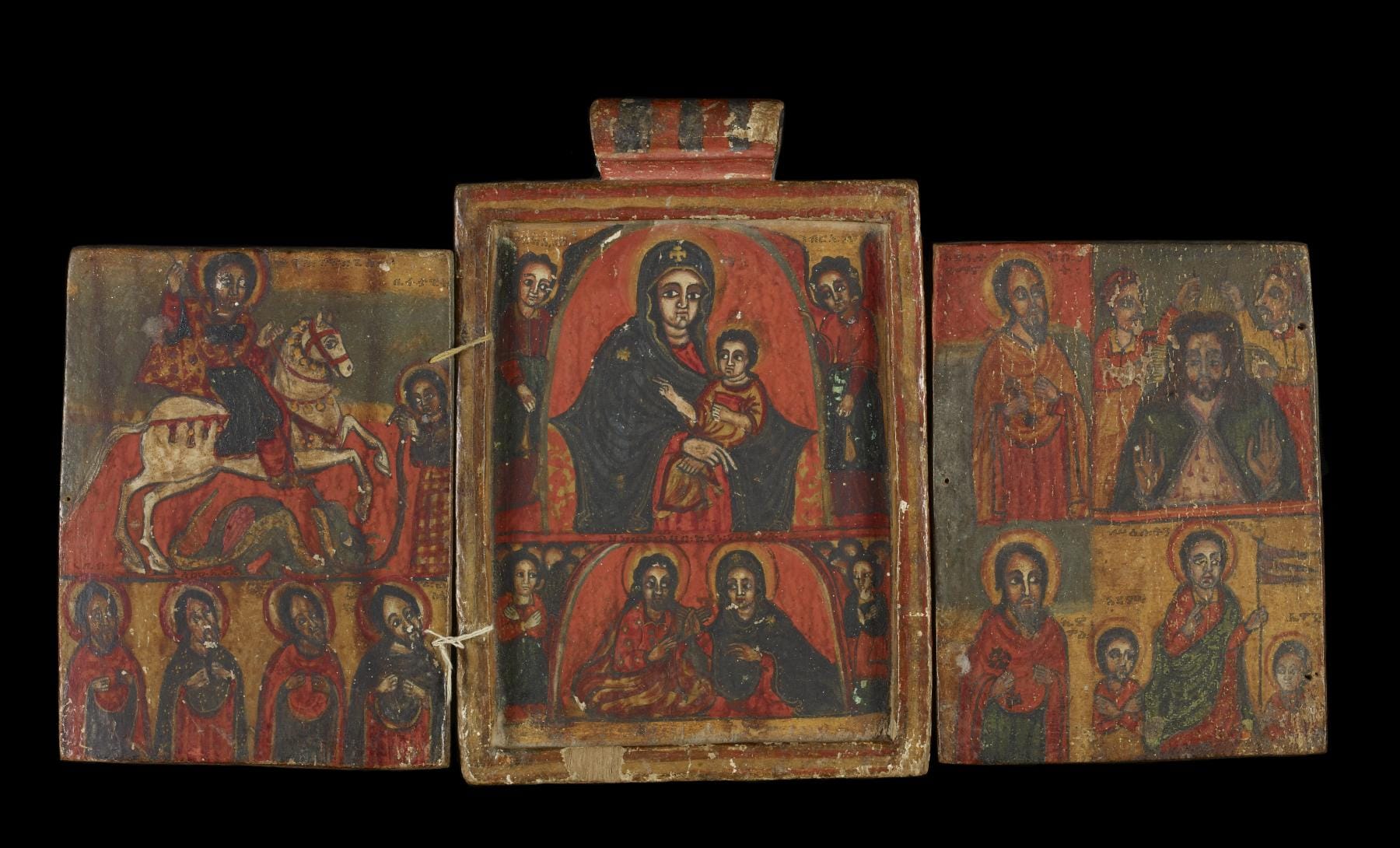
Source


